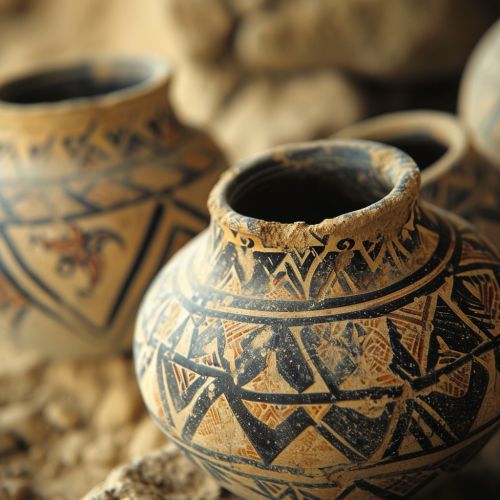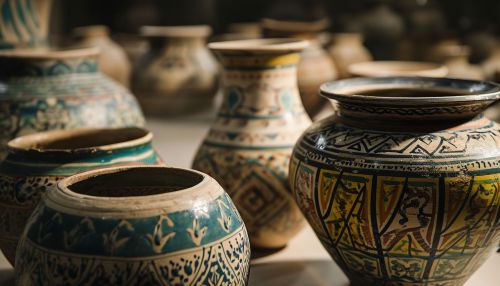Ubaid period
Overview
The Ubaid period is a prehistoric era particular to Mesopotamia that is dated from c. 6500 to 3800 BC. It is named after Tell al-'Ubaid, where the earliest large excavation of Ubaid period material was conducted initially in 1919-1924 by Leonard Woolley, in the south of modern-day Iraq. Archaeologists have identified several distinct phases within the Ubaid period, each characterized by different architectural styles, pottery types, and other material culture.
Ubaid 1
The Ubaid 1 period, also known as the Eridu period, is dated from 6500 to 5400 BC. It is named after the ancient city of Eridu, one of the oldest cities in the world. This period saw the development of the first temple architecture and the first examples of painted pottery. The pottery of this period is often finely made and elaborately decorated with geometric and figurative designs.


Ubaid 2
The Ubaid 2 period, also known as the Hadji Muhammed period, is dated from 5400 to 5000 BC. During this period, the Ubaid culture began to spread across Mesopotamia, with evidence of Ubaid influence found as far north as Tell Brak in modern-day Syria. The pottery of this period is characterized by a distinctive greenish-black painted ware.
Ubaid 3/4
The Ubaid 3/4 period, also known as the Late Ubaid period, is dated from 5000 to 3800 BC. This period saw the development of large village settlements and the widespread use of irrigation agriculture. The pottery of this period is often unpainted but finely made, with designs incised or impressed into the clay.
Architecture
The architecture of the Ubaid period is characterized by large public buildings and private houses made of mud-brick, often with multiple rooms arranged around a central courtyard. The most notable architectural feature of this period is the tripartite house, a type of building with three main rooms arranged in a row.
Society and Economy
The Ubaid period saw significant social and economic changes, including the development of social stratification and the beginnings of state formation. The economy was based on agriculture, with the cultivation of wheat, barley, and flax, and the rearing of livestock such as sheep, goats, and cattle. There is also evidence of long-distance trade, with artifacts from the Ubaid period found as far away as Anatolia and Iran.
Religion
The religion of the Ubaid period is not well understood, but it is believed to have involved the worship of a number of gods and goddesses, with a particular emphasis on fertility and agriculture. The most notable religious structures from this period are the temples, which are often large and elaborately decorated.
End of the Ubaid Period
The end of the Ubaid period is marked by a gradual transition to the Uruk period, which saw the emergence of the first true cities and the invention of writing. The reasons for this transition are not well understood, but it is believed to have been driven by a combination of environmental changes and social and economic developments.
